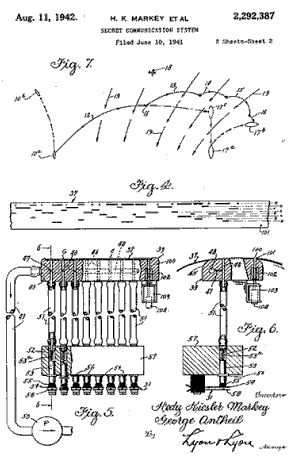


© 2006 William Ahearn. @
Somewhere along the line, I had forgotten about Hedy Lamarr. My memories of her were of flickering images on a black and white TV during my insomniac childhood in New York City while “The Late Show” and then “The Late Late Show” screened the backlist of Hollywood movies almost to dawn. There is a clear memory of seeing Cecil B. deMille’s “Samson and Delilah” with Hedy Lamarr and Victor Mature in my neighborhood second-run theater sometime in the early 1960s but I’m not swearing to that although I remember the temple collapsing on the big screen in Technicolor as well as I remember most things. Everything else about Husa telefon personalizata the movie is completely forgettable; even the ridiculous scene of Victor Mature wrestling a stuffed lion. There is a grainy memory of Hedy Lamarr and Charles Boyer sneaking through the alleys of the Casbah in “Algiers,” her first Hollywood picture and his first starring role. It was a remake of the French flick “Pepe Le Moko,” and a pale copy of the original. There is also the sinister “The Strange Woman” directed by Edgar G. Ulmer that shows one of her best performances.
In 1974 she popped up briefly when she sued Mel Brooks, who had just released “Blazing Saddles,” for naming the Harvey Korman character “Hedly Lamarr.”
Once again she slipped under the radar.
And then in the late-90s, on the back roads of the internet, out where the geeks and the techheads play, she re-entered my imagination when the Electronic Frontier Foundation gave Hedy Lamarr an EFF Pioneer Award.
Not just another pretty face, Hedy Lamarr and her collaborator, avant garde composer George Antheil, developed the basis for the secure communications that would be used during the Cuban Missile Crisis and —decades later — the cellular phone and wifi internet connections. They would never make a dime from the patent (reproduced above) that described frequency hopping that would evolve into spread-spectrum communication technology. The patent had lapsed before the US military finally grasped its significance.
There are numerous sites explaining the story scattered around the web that tell the story and rather than rewrite what’s already has been written I’ll just direct you here and here.
What sometimes gets lost in the shadow of Hedy’s re-rising star is the work of George Antheil. Antheil was a composer whose controversial work sometimes was greeted by riots in Paris. In Hollywood his stock music was used in numerous films and he composed the soundtracks for “Knock On Any Door,” and “In a Lonely Place,” both directed by Nicholas Ray and both starred Humphrey Bogart. More info on Anthiel is here and here.
Something else got lost in the shuffle of time and the devastations of World War II. Hedy Lamarr, as so many others, fled Europe as the Fascists and Nazis rose to power. She drugged her maid and escaped from her obsessive and controlling munitions industrialist husband to live and work in the US. In a strange twist of fate, her Nazi sympathizing husband escaped to South America after the war and became a film producer who worked with an actress named Eva Peron.
Before all of that, Hedy Eva Kiesler (shehe first fil was given the last name Lamarr by MGM’s Louis Mayer years later) was a Czech actress who had studied acting with the legendary Max Reinhart and made a few films. She then made “Ekstase” (“Ecstasy”) one of the most notorious films of the 1930s. It was considered so obscene that it was tm to have the US customs laws prevent it from entering the US.
I had to see it.
Gustav Machaty’s “Ekstase” is the story of Eva Hermann, a young Czech woman who marries an older man. The husband is obsessive-compulsive and it becomes apparent early on that the ecstasy of the title will not take place in the orderly rooms that they move into on their wedding night. What is immediately striking about this film is how little dialog occurs. Everything that needs to be said is shown with keys and locks and fingers and rings and the visual language of the cinematography. Unlike its US and English film counterparts of the time, this flick isn’t bogged down in conventions of the theater and constant blatherings about the obvious. One of the other treats of watching films from a distant past and place is seeing the household stuff that people lived with in those days: The lamps, telephones, stoves, clothes and cars that indicated class or social position.
Emotionally and physically ignored by her husband, Eva returns home to her widower father and from there the story unfolds. The nude scene that drove the censors into sputtering fits takes place as Eva goes skinny-dipping and her horse — interested in another horse’s attention — takes off with her clothes. If you’ve seen this film and only remember Eva in the water, then you saw the brutally edited version that was released in the US. It is when Eva comes out of the water and gives chase to the horse that the film’s nudity takes place. It’s a comic scene and there’s nothing prurient in the least about it. I imagine that when Frank Capra saw this scene he screamed, “Goddam it, why can’t I do that in my pictures?”
What truly bothered the censors wasn’t only a pair of perky hooters and a really cute butt gamboling naked across the meadow in search of a horse but a later scene where Eva has sex with her new lover. Explicit in its time for the depiction of the sex act, Eva is clear in her reaction to it and not only does the girl gotta have it, the girl loves it. It is a beautiful cinematic moment in which no one has been exploited or seduced or used or is guilt-ridden in its wake. It’s a scene of two lovers finding themselves and working the physical magic of love that becomes part of the entire framework of the film. As far as I know this is the first depiction of female orgasm in film and the film portrays it as part of life. If there was ever a film that presented nudity and the sex act as part of the human aspect of being alive, this is it. While things don’t work out for the couple, what breaks them apart is dramatic (in the old sense of the word) and credible within the context of the swirl of melodrama driving scripts in those days.
As Henry Miller noted in an essay collected in The Cosmological Eye:
“Each time I view the film I am more impressed; each time I go I discover new marvels in it. And each time I understand better why, even if there had never been a question of censorship, [“Ekstase”] would create antagonisms. Even in its best moments the film is bound to produce a feeling of discomfit for the ordinary moviegoer . . . .”
While I’m tempted to reveal the further workings of the plot, I won’t. “Ekstase” remains a very watchable film and it’s a very coherent film (check out the use of insects and animals throughout the movie) even with its ending montage seemingly inspired by Sergei Eisenstein and other Soviet filmmakers. But the ending of “Ekstase” doesn’t glorify the supposedly peasant-run worker’s paradise as so many Soviet filmmakers were forced to portray.
It merely shows that life goes on.